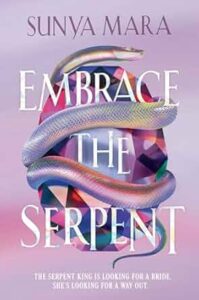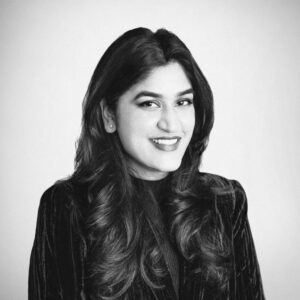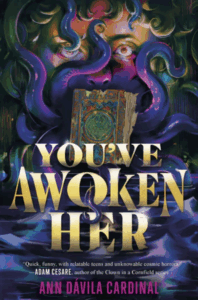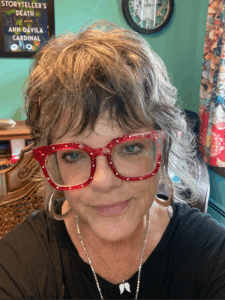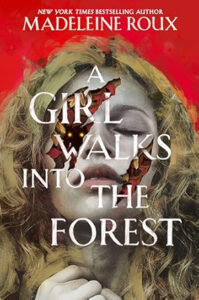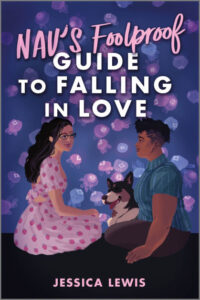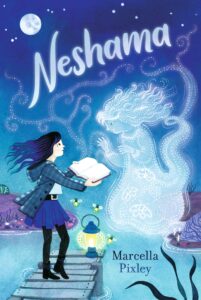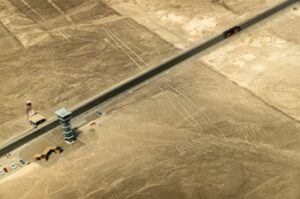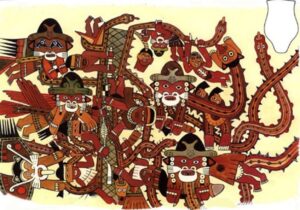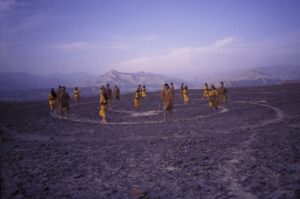“What Would It Take to Love a Snake”
.I’ve always been afraid of snakes. They give me the primordial heebie-jeebies—a fear so deep in my blood that I’m sure my ancestors are recoiling, too. But, one day, I saw this king snake in my backyard — an enormous, black-and-white striped, insanely long creature — and for some reason, a little voice in my head said: what would it take to love a snake?
I had been tinkering with this idea of a girl who made magic jewelry, but it was at that moment that Embrace the Serpent really had a spark. Jewels and snakes go together often in fairytales—there are too many examples to name, but I’m particularly fond of “The Snake Prince” and “Muchie-Lal”—and I started wondering why. Why do fairytale serpents have bejeweled palaces? Why does a queen’s ruby necklace turn into a snake, and the snake into a prince? Why does a bride have to embrace a hundred-headed snake for an entire night without letting go, to save her bridegroom? Why do they go together, the things we covet and the things we fear?
One thought kept nagging at me. It’s a simple one: both snakes and jewels are found deep in the earth, hidden from sight.
That idea inspired me. That something could be lurking just beneath your feet—something that could be wonderful, or dangerous. And you can’t know which it is unless you’re brave enough to seek it out, to reach into the dark, the unknown, and take hold of it.
Saphira, the main character in Embrace the Serpent, is a girl who’s so afraid of the world that she lets someone else take the credit for the magical jewelry she makes. But, she doesn’t realize that her work is so extraordinary that powerful people are paying attention, including the Serpent King. That idea, of being afraid to claim your work as your own, and therefore limiting yourself to a cage of your own making—that became the crux of Saphira’s character.
She’s tested when the Serpent King sends his cleverest huntsman to find the best jewelsmith in the world, and he realizes that the unassuming little apprentice is the true genius behind these extraordinary works. Unfortunately, his scrutiny leads others to discover her, and sets of a chain of events that leads to Saphira making a dangerous deal with the Serpent King: she’ll help him, if he’ll give her the means to hide forever.
And that’s where the unlikely romance begins. As they journey together, pretending to be newlyweds, they begin to see each other as more than a means to an end. Both Saphira and the Serpent King have something to hide, and I wanted to capture the feeling of guarded people slowly opening up to each other, and finding that under the fear, there’s something to love.
Who we love shows us who we are. And sometimes who we really are is a surprise to ourselves—in a good way. Sometimes being loved changes the beloved.
That feeling of transformation—of becoming stronger because you have something or someone to be strong for—was the thing I most wanted to explore with this story.
Some of the books and movies that have been a touchstone for this story include Howl’s Moving Castle by Diana Wynne Jones, Sailor Moon by Naoko Takeuchi, Pride and Prejudice by Jane Austen—all these have one thing in common, which is that the main character undergoes a radical transformation because they found a reason to be braver in loving someone else. I found those stories powerful, especially in the context of a world that seems increasingly self-centered and fearful.
Fear can be good, because it keeps us alive, but it also can keep us stagnant. You can only be sure no one will hurt you if you’re all alone, that you’ll never say something wrong if you never speak at all, and that nothing horrible can happen to you if you never leave the house—but centering fear seems like such a shame, when there are so many wonderful things to embrace instead.
That, I think, is what Embrace the Serpent is about. It came out of me as an antidote to fear. It reminded me of the power of delight, of choosing to be strong enough to care. I hope that if you choose to give Embrace the Serpent a chance, that Saphira and the Serpent King’s love story will take care of you the way it took care of me.
And, the funny thing is, I still think about that king snake. In a way, it gave me this book, and the adventure of writing it. It changed me for the better, and I’m grateful to it.
And I wonder, what would it take for you to love a snake?
Published June 24th, 2025 by HarperCollins
About the Book: “An exquisite jewel of a book.” —Ava Reid, #1 New York Times bestselling author of A Study in Drowning
In this sweeping romantic fantasy, a dangerous deal binds a young jeweler’s apprentice to the mysterious Serpent King in a marriage of convenience, thrusting her into a deadly game between the cunning, fearsome ruler and his rebellious huntsman. Perfect for fans of The Wrath & the Dawn and Once Upon a Broken Heart!
The Serpent King is the most eligible bachelor in the land: a monster with dark and terrible magic and the ruler of the last free kingdom. Riches and power await his future bride—but so does a life forever trapped in the games of court.
That fate is eighteen-year-old Saphira’s worst nightmare. Ever since the Empire made her an orphan, she’s found freedom in being invisible. So despite her rare gift for harnessing the magic in gemstones, she lets an unscrupulous jewelsmith take credit for her increasingly sought-after work.
But when the king sends his most clever huntsman to find the best jewelsmith of all, the spotlight lands on Saphira. Faced with choosing between falling into the Empire’s grasp or marrying a monster, she chooses the latter — even if it means getting increasingly caught between her cold, serpentine husband and his cunning, handsome huntsman.
About the Author: Sunya Mara grew up in six different cities across five different states and now calls Los Angeles home. She studied film and business at the University of Southern California and went on to write and illustrate at Kobe Bryant’s Granity Studios. When not telling stories, she spends her time haunting old movie theaters and staring at museum walls.
Thank you, Sunya, for sharing your fear that became power in this post!
